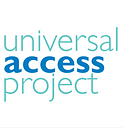Faces of Ecofeminism: A Q&A with Dr. Musimbi Kanyoro

By Seema Jalan
Dr. Musimbi Kanyoro is President and CEO of the Global Fund for Women. She is an activist for women’s and girls’ health and human rights, and passionate about using philanthropy and technology to drive social change.
Universal Access Project: Throughout your career, you have held a focus on integrating women’s health and rights — including reproductive health and rights — with global health, environmental and development issues. Why is this integration so important?
Dr. Musimbi Kanyoro: I am one of the woman activists who were part of movements that impacted or were impacted by the International Conference on Population and Development, which took place in Cairo in 1994. The Programme of Action from that conference asked governments to commit to advancing sexual and reproductive health and rights (SRHR) and to promote gender equality. For me, that was the beginning of a holistic approach that put women at the center of global conversations on development and the environment. The women activists of the 1990’s started this integration movement. In fact, women’s empowerment was a central tenet that defined the development agenda in all five UN conferences that took place in the ’90s. Over time, it has become widely accepted that SRHR is central to the development agenda and essential for achieving social and economic justice.
Yet, we know that women still get a raw deal in development. More than 200 million women in developing countries want to prevent pregnancy but lack access to effective contraception, resulting in 80 million unintended pregnancies, 30 million unplanned births, 40 million abortions, and many life-threatening consequences, especially maternal mortality and morbidity. Every day, more than 800 women die from pregnancy and childbirth-related causes, a total of 300,000 every year, with 99% of these deaths occurring in so-called “developing countries.” And, worldwide, seven in 10 women experience domestic and sexual violence at some point in their lives.
To change these situations, we need to use multiple responses. Poverty, illiteracy, power disparities between men and women, the rich and the poor — all disadvantage women. When interlinked with other issues such as race, sexuality, or disability, women become even more vulnerable. Women have been disproportionally disadvantaged, and this is the reason for a focus on women and girls now. Investments in women and their SRHR is not only cost effective, it saves lives, and that is what development should be about. It should be about enabling people to have opportunities and resources to design and improve their lives.
At the same time, climate change and environmental threats are all around us and hinder progress on the development agenda. The impact of climate change is strongest in developing countries and hits the poorest, most vulnerable communities the hardest because they do not have resources to mitigate the risks. Women bear the brunt of the impact when environmental destruction and climate change hampers access to food, water, sanitation, transportation, and security.
So, a holistic approach that integrates SRHR with environmental sustainability is not only essential, it is the only way to make better and lasting progress.
UAP: As you mentioned, girls and women are especially vulnerable to environmental and climate challenges, from extreme drought to natural disasters. But they have a key role to play in finding solutions. How do you view the concept of climate justice, and how are women leading the charge toward a more equal world?
MK: The term “climate justice” resonates with me because its focus is not just on the environment, but on the people. Many people living in developing countries, including women, are not responsible for the primary drivers of climate change. The unsustainable patterns of production and over-consumption that increase destructive emissions are indulgences of the developed world. The results over time are increased floods, reduced agriculture and food production, and poor sanitation, to name a few, and those who do not have the capacity to adapt and mitigate these emergencies are impacted the most.
UAP: At the Global Fund for Women, you focus on investing in powerful social movements for women’s rights. What are some innovative movements in the women’s rights and environment space?
Global Fund for Women stands with the women at the front lines of climate change. We put money in their hands so they can advance their own solutions to help safeguard the fates of their communities. We also work with other women’s funds to build a common understanding of investing at the intersection of women and the environment, and to underscore the importance of supporting women-led groups combating climate change.
Results from our grantee partners show just how powerful women’s solutions can be. In Burkina Faso, where crops are dying across the country from drought, women have installed irrigation systems, trained their communities in water conservation, and prevented desert encroachment onto fertile lands. In India, women have come together to create collective farms for landless and marginalized Dalit women. Over 500 women now work proudly on these farms, growing millet and other traditional crops that not only feed their communities, but undo years of harm to the land. And in Uganda, women farmers have organized together to embed gender justice in climate change policy. Their voice is having impact with officials locally, regionally, and across the world.
Women’s movements on SRHR have faced many challenges over time. These are movements that dare to spell out the right for women to own their bodies and decisions. They ask for safety, for the right to choose their relationships, and the right to decide on matters of sex, pregnancy, love and work.
UAP: When it comes to the concept of “development” — related to women’s rights, climate, and beyond — what do you wish philanthropists and NGOs would better understand about people’s lived experiences around the world?
MK: Global Fund for Women has gathered evidence that funding grassroots women’s organizations has many benefits. It builds their capacity to take actions suitable for themselves and their communities. Change that happens at the community level has more potential to succeed than change imposed externally.
Philanthropists who have long feared making small grants should take bold steps now. There are many women’s funds willing and able to undertake that task on behalf of bilateral and foundation donors. Global Fund for Women has made grants to more than 5,000 organizations in 175 countries, but we have the capacity and bandwidth to do more.
Finally, it is not enough to just count money that might be given for gender or women and girls through multilateral or international NGOs. These organizations do a good job, but their roles should not overshadow homegrown organizations. Empowering local organizations with resources and trust is the better way to build a new future for all of us.
Women do not have to be seen as only able to get the smallest of funds. There are women’s groups and organizations who have grown and have capacity for big grants. Trust and support women.
Learn more about the Universal Access Project and get involved at www.universalaccessproject.org.








